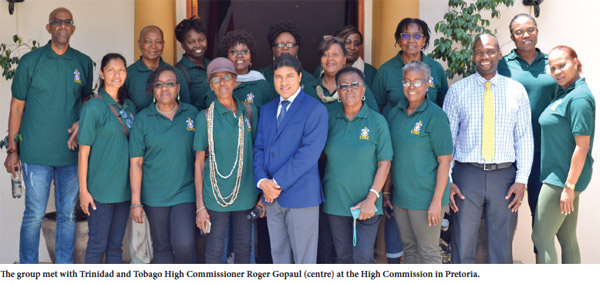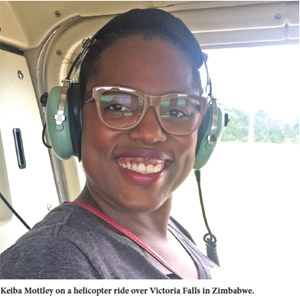 |
 |
 |
|
May 2019
|
Providing “immersion in the culture, history, politics, architecture and people” – that is how the International Office describes its UWI Discover Series. Started in 2012, the series has carried students and staff to countries such as Brazil, China, Cuba and India. At the end of 2018 a group embarked on the UWI Discovers Study Tour to South Africa. Ms Carol-Anne Agard was one of them. The study tour was a life-changing experience that is etched in my mind and vivid in every photograph or video from the tour. After a 14-hour flight we arrived at the Oliver Tambo International Airport, in Johannesburg on December 27, 2018. We hit the ground with no time to rest. Our first tour was to the Walter Sisulu Botanical Gardens, where we were greeted by South African writer and activist, Elinor Sisulu, daughter-in-law of prominent anti-apartheid activists, Walter and Albertina Sisulu. The Gardens is a lush park with undulating grounds that rose gently to an escarpment from which cascaded a river and beautiful waterfall. I noted the multicultural mix of visitors to the Gardens, indeed to South Africa. One of the highlights of the trip was the Soweto Township tour. We drove through Johannesburg, a city with a skyline of skyscrapers, luxurious homes, and tree-lined boulevards, juxtaposed with weathered government housing and hovels with galvanised roofs. The tour was led by Soweto-born, professional storyteller Bongani Godide. Bongani took us on the same route that the oppressed, black students took in protest of the Bantu Education Act during the Soweto uprising on June 16, 1967. The protests spread all over South Africa because of brutal gun attacks on unarmed students by the white police. We visited the Hector Pieterson Museum which recounts the tragedy and death of its namesake, a 13-year-old boy who was shot and killed during the uprising. Our visits to the Hector Pieterson Museum, the Apartheid Museum and the Old Fort Prison on Constitutional Hill, linked the past to the present, giving a vision of hope for the future. However, the scars remain, making the society’s efforts to move on difficult. Afterwards we made our way to a game park and lodge situated in the transition zone of the Kalahari and the Lowveld in Pilanesberg. This area is home to the “Big Five” – the African elephant, black rhinoceros, Cape buffalo, African lion and African leopard. Our guides assured us that we would see all five as well as other animals at the reserve. In the game park, animals co-exist and are allowed free movement: from the hardy oryx to the shaggy-coated waterbuck; the sable antelope and the kudu with its spiral-shaped horns; and springbok, impala and wildebeest, important prey species. Ringing in the New Year surrounded by nature and enjoying a sumptuous meal (which included springbok in wine) was truly memorable. Our historical, anthropological and cultural perspectives on South Africa expanded during discussions and through reading materials provided to us before our departure. These prepared the group for seven days in Cape Town.
|



 Cape Town
Cape Town